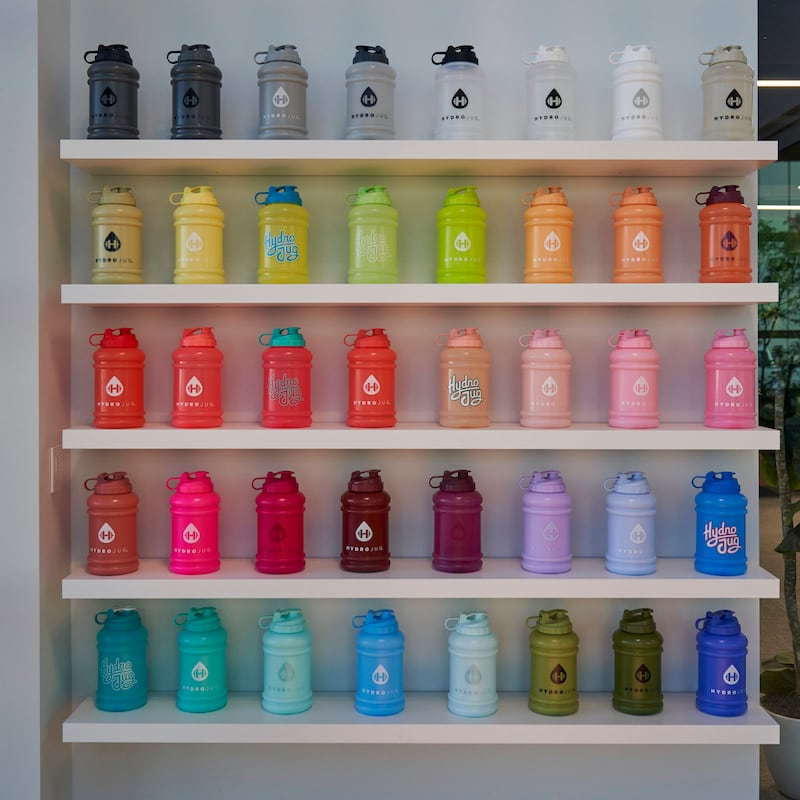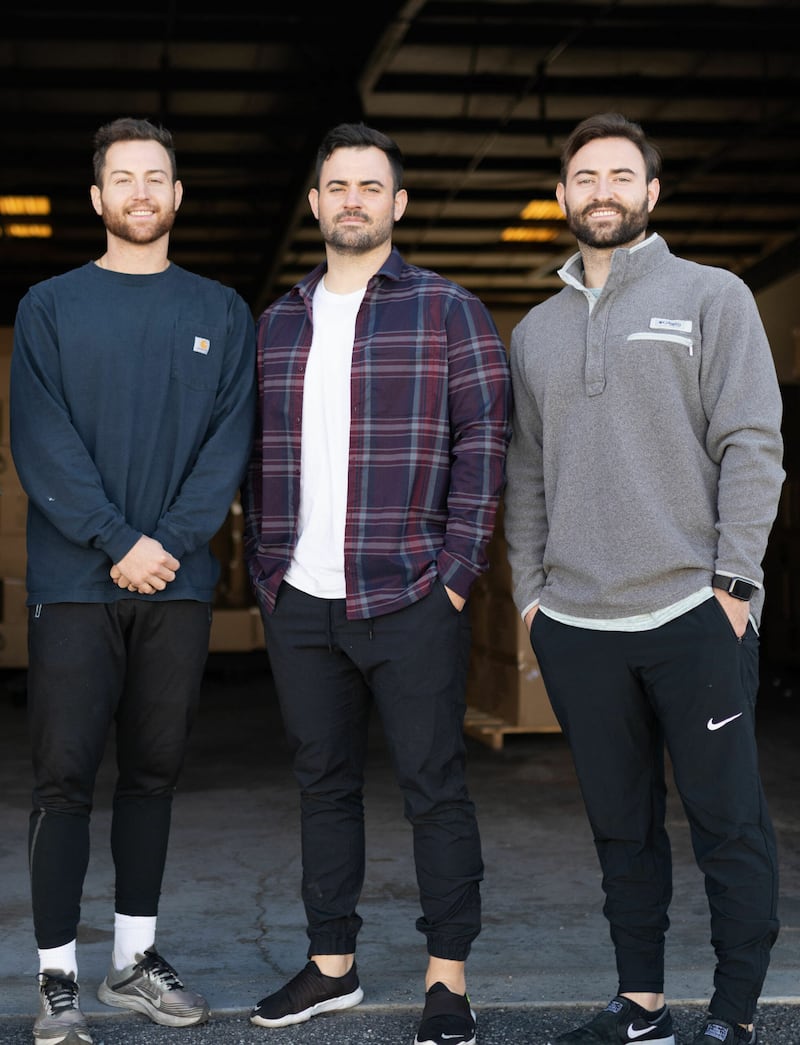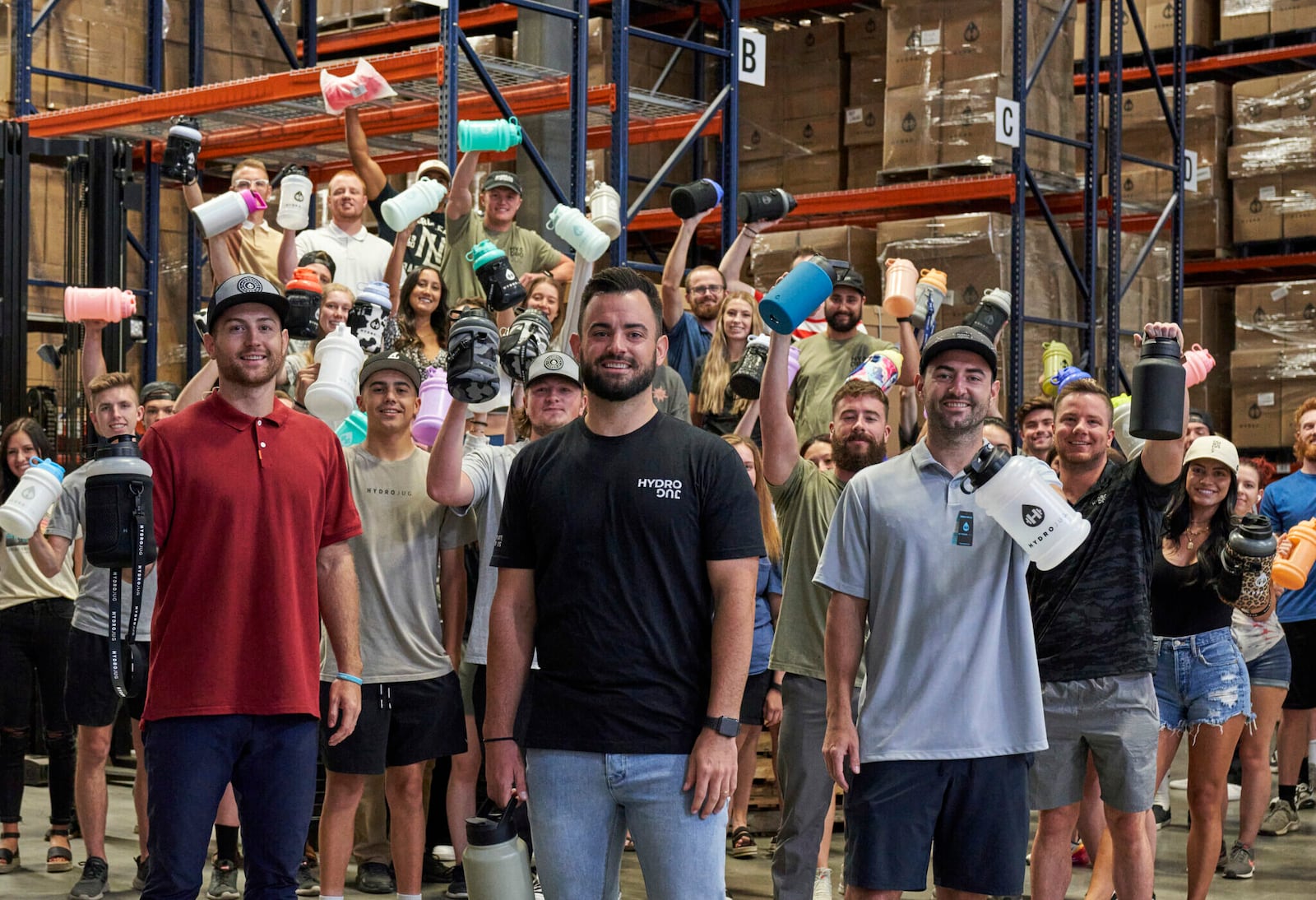Iwas raised in an entrepreneurial family. Growing up, my mom owned Subway franchises and my dad had a landscaping business. To teach us responsibility, my parents made sure the kids were responsible for paying off certain bills, such as gas. We’d work in my dad’s landscaping business during the summers and at Subway during the winters.
My first job working for someone outside the family businesses was for an outsource sales business called MarketStar. I speak Spanish, and at MarketStar, I opened the Spanish-speaking region of sales. In that role, I created all of the sales flows. That experience taught me how to make sales, develop processes and solve problems. I was at MarketStar while working on my undergrad, so I always worked full-time while going to school full-time. Once I earned my bachelor’s degree, I was ready to start my own company.
Following in my parents’ footsteps, I wanted to work for myself. I knew all the good things about business ownership and why it can be so appealing, but it hasn’t been exactly a walk in the park. There are reasons why only five percent of entrepreneurs achieve success. I left a good career with benefits. It would have been good to know what I was getting myself into, but I didn’t know anyone who had gone down the journey I was going down.
Looking for the ‘right’ business
Before HydroJug, I was always on the lookout for the right business opportunity. I considered everything from a tie business to gifting and different website ideas. Shopify and other e-commerce platforms were newer back then, and everyone was getting into drop shipping.
I have always liked fitness, and one day I saw a YouTube video by fitness influencer Steve Cook. He was talking about all the jugs on a grocery store shelf, saying, “This one’s not good because of this, this one’s not good because it doesn’t have a handle, or the opening is small, or the plastic is for single use.” That’s when I had one of those lightbulb moments of, “Whoa, nobody’s producing a quality jug.”
That’s when I started looking at all of the other drinkware brands. You have the stainless steel people doing all the same things, then the shaker bottle brands doing the same things and competing against each other. I wanted to create something with no compromises and with a unique and individual brand behind it. I wanted to sell an experience.
In 2017, I started HydroJug with my brother, Jake, right after I had a six-month break between my undergrad and my graduate school degree. Around this time, I got a job at Hill Air Force Base working for the Air Force and contracting because I didn’t want to put any unnecessary stress on the business. Neither Jake nor I took any money from the company for the first two or three years.
At that time in our lives, Jake and I didn’t have any money. I remember talking to Jake and saying, “Hey, the bottles are ready to be ordered. We have to pay 30 percent down to get them produced and then 70 percent once they’re ready to ship.”
I asked Jake, “How much do you have?” He had money saved up for an engagement ring, and he said, “I created this account at America First Credit Union; you can transfer it over.” We put what we had into the business, which determined how many colors we could make. By January 2017, we had just launched with clear, black and white.
About two years after Jake and I started HydroJug, I was doing my MBA, working full time and working on HydroJug the last two hours of the day and on weekends to get the company off the ground. I handled all of the product development as well as anything I could do on a computer at work like running the website, reaching out to people on Instagram and reading up on how to run email campaigns.
My brother was finishing up his undergrad and was running HydroJug part-time as well. Jake was in charge of the fulfillment and warehouse side of things. Our parents had a detached garage, and that’s where we kept the bottles we ordered. Jake would ship out orders when he was done with school each day.
We rented desks at Weber State Downtown because it was a cheap, dedicated space where we could meet, make sales calls and try to recruit influencers. We’d meet every day at 6 p.m. and make calls until 8 p.m.
Once the company was finally at the point where I could take a small salary and afford insurance, that’s when I went full-time with HydroJug. I never wanted to manage a business from purely a financial perspective. I wanted to have the finances in good order, but I also wanted a business that delivers awesome customer experiences and a fresh new look to the industry with innovative products that solve real problems.
The best example of this is our Stainless Steel bottle. We have a huge rubber base on the bottom because I can’t stand the big “clank” sound other stainless steel bottles make when you set them down. It costs extra money to add that, but the added cost is worth it to add quality and innovation to our product. It really sets us apart from other companies and goes back to what makes us special—our attention to detail.

Pinterest ads 10X the business
That first year, we hardly made any money. In the second year, my buddy Chris started working at Pinterest and learning about Pinterest ads. Chris said to me, “I love your product and I use it all the time. It’s nice because it sits on my desk and I don’t have to refill it.” He actually believed in it and asked if he could run ads for us. Those ads literally grew our number of HydroJug orders by 10X.
We started running Facebook ads and came out with new products. Right after that first order, we released a bunch of bottles in different colors. That was the first big break. They sold out quickly, and we kept reordering.
At expos, people would say, “I drink way more water out of a straw,” or, “Is this insulated?” We came out with a neoprene sleeve that could be placed on the jug and a straw that closed down inside the bottle. Now, instead of people buying a $20 bottle, they were buying a $20 bottle and a $20 sleeve.
With customers paying $40 instead of $20, we could spend more to acquire more customers. By the start of the third year, we put prints on the sleeves. Cell phone cases were starting to become really popular, and people were posting the different prints they had. It was a big deal to switch out your phone case and have different styles of phone cases. We put prints on the sleeves, and that’s when stuff really started to boom. For example, we had an ad run for our first floral sleeve, and it was really bright and loud. Every time we ran ads with it, we would sell out.
We were constantly trying to figure out how to keep products in stock. That was the game all the way up until 2019 when we leased a second warehouse.
Supply chain issues during the pandemic
The business was growing significantly, then Covid hit. We got to the point where we literally didn’t have a single product at either of our warehouses. We were in a really cheap warehouse in West Ogden, and we only had a few employees and most of them were hourly. We would get to work and answer emails, then just play a lot of golf because there was nothing to do.
It was like that for probably two or three months, then things were back up and running fully. We started to understand how to build out a marketing calendar and get more organized. The whole time, we were fighting over cash. There are credit cards that offer 60-day floats, so we found out how to send wires off of these credit cards and get 60 days to pay for them. We’d basically sell the product before I had to pay for it, so that’s how we bootstrapped and grew it. We’re still self-funded today. We moved into a 40,000-square-foot warehouse and new office space. Right now, we have probably 45 employees with good teams built out and processes in place.
The first five years, we were basically all D2C because we wanted to build the brand and the experience. When we sent out boxes, they had to look a certain way—I wanted to make the customer feel like, “Hey, the person who taped this cared about how it was taped.” Now, in 2023, a big initiative we have is moving into retail and making sure we can be successful in that market. We’ve had tests in Target and Sam’s Club, and they’re both going really well. We have good relationships with Scheels Sporting Goods. It’s a super exciting time for the business.

Running a family business
Working with my brother has been great. Jake handles the operations side, and I took over brand and marketing. I do the books, legal and IP, and he took over all the warehousing, which he set up. We have conveyor belts and auto baggers. Jake has also handled the customer support team, built up the retail piece of the business and operations and owned projects as needed to change and shift in the business. He is the day-to-day guy over warehousing.
I think that one of the most important pieces of my business relationship with my brother is how we grew up really close and working together. I think it’s so important in business to be candid, and I can be a lot more candid with my brother than with a stranger. Jake and I have had very few fights, and when there are fights, it comes from a good place. For me, it’s been a really good experience and an important piece to the business. I don’t think it all would work if we didn’t have the relationship we do.
One of the hardest parts of entrepreneurship
As an entrepreneur, you’re constantly learning something new. You have to be so resilient. You also have to be vulnerable because you are going to mess up every single day. I think being really vulnerable, being okay with it and learning to love that process is super important to entrepreneurship.
Once you grow to a certain size, stressors are constant. On top of that, you have problems you’re trying to fix and solve. You also kind of get a target on your back and everyone wants a piece, whether that’s a salesman, legal battles, tax problems—those are going to come with a certain size of business. At the end of the day, you have to be really self-aware, take care of yourself and make sure your mind is in a good spot to be able to function, execute and be successful.
To deal with the stress, I take what I call preventative measures. Just because I’m not stressed today doesn’t mean I can’t do the things to prevent stress from happening tomorrow. A big way I do this is through exercise. For me, exercising used to be for strength, and now it’s literally just for mental strength. That’s all I care about—being in a good place mentally.
Sometimes I think, “How can I be so selfish to put myself first?” It was really hard for me to come to grips with and actually make that change. That switch flipped for me in 2021, where I realized I have to take care of myself. At first, it was like, “Hey, dude, put your head down and work.” I was able to do it for a few years, but it catches up to you. Self-care is important to weather the storms of entrepreneurship.

